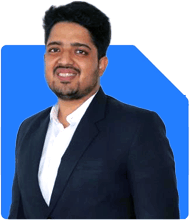Hi Sir, I am investing in Parag Parikh Flexi cap 2k, Nippon India Small Cap 2k, PGIM India Midcap Opportunities 2k, Bank of India ELSS Tax Saver 2K and Kotak Flexicap Fund 2k. Are the above funds good to invest, invest for last 3 years and would like to continue for next 15 Years. I am 35 years old. I am also investing in PPF 5K per month for last 4 years. Please suggest if I need any change/add to this list?
Ans: Assessment of Current Investments
Your current investment portfolio shows a thoughtful approach to diversification. You’ve chosen funds across various categories: flexi cap, small cap, mid cap, and ELSS. This is a strong foundation for long-term growth. Let's break down the elements and assess if any adjustments are needed.
Flexi Cap Funds
Strength in Flexibility: Flexi cap funds offer flexibility across market capitalizations. This flexibility can help navigate different market cycles effectively.
Balanced Risk and Return: Your investments in flexi cap funds are well-positioned to balance growth with stability. This makes them a solid choice for your long-term goals.
Small Cap and Mid Cap Funds
High Growth Potential: Small cap and mid cap funds provide exposure to companies with high growth potential. Over a 15-year period, these can deliver substantial returns.
Increased Volatility: However, these funds can be more volatile in the short term. The long-term horizon you have planned helps mitigate this risk.
ELSS Funds
Tax Efficiency: Your investment in an ELSS fund not only offers growth potential but also provides tax benefits under Section 80C. This dual benefit is an excellent strategy.
Long-Term Commitment: ELSS funds come with a lock-in period of three years. This aligns well with your long-term investment horizon, ensuring discipline in your investments.
Public Provident Fund (PPF)
Safe and Secure: Your monthly investment in PPF adds a layer of security to your portfolio. PPF offers assured returns, making it a good tool for risk management.
Tax-Free Returns: The returns from PPF are tax-free, which adds to the overall growth of your corpus. This is a sound strategy for long-term wealth accumulation.
Evaluating the Need for Changes
Given your diversified approach, your portfolio is well-structured for long-term growth. However, let’s consider a few additional points to ensure it remains robust over the next 15 years.
Consideration of Additional Investments
Large Cap Fund: While flexi cap funds provide exposure to large caps, you might consider a dedicated large cap fund. This can further balance your portfolio by adding stability through investments in established companies.
Sectoral/Thematic Fund: If you are willing to take on a bit more risk for potentially higher returns, a small allocation to a sectoral or thematic fund could be considered. This is optional but could add another layer of diversification.
Revisiting PPF Contribution
Balance with Equity Exposure: Your current Rs. 5,000 monthly investment in PPF is a safe choice. However, ensure that it doesn’t overshadow your equity investments. Equity has the potential to outpace fixed income returns over the long term.
Review Periodically: Keep reviewing your PPF contributions in relation to your overall portfolio. Adjustments may be needed based on changing market conditions or life goals.
Long-Term Investment Strategy
Consistency is Key: You’ve been investing for the last three years, which is commendable. Continue with this disciplined approach to build wealth over time.
Periodic Review: It’s essential to review your portfolio periodically. This ensures your investments remain aligned with your financial goals and market dynamics.
Rebalancing: As your investment progresses, consider rebalancing your portfolio. This helps in maintaining the desired asset allocation and managing risk effectively.
Direct vs. Regular Funds
Disadvantages of Direct Funds:
No Professional Guidance: Direct funds lack the guidance of a Certified Financial Planner. This could lead to missed opportunities or higher risks.
Time and Effort: Managing direct funds requires significant time and effort. Without expertise, this could result in suboptimal investment decisions.
Advantages of Investing Through a CFP:
Tailored Advice: A CFP provides personalized advice, ensuring your investments align with your financial goals.
Ongoing Monitoring: Investing through a CFP means your portfolio is regularly monitored and adjusted to market conditions, optimizing your returns.
Final Insights
Your investment strategy is on the right track with a diversified portfolio across flexi cap, small cap, mid cap, and ELSS funds. Your monthly PPF contributions also add a layer of security to your financial plan. However, consider adding a large cap fund for further stability and possibly a sectoral fund for additional diversification.
Stay consistent with your investments, periodically review your portfolio, and consider the guidance of a Certified Financial Planner for optimal results. This will ensure that your investments continue to grow and meet your financial goals over the next 15 years.
Best Regards,
K. Ramalingam, MBA, CFP,
Chief Financial Planner,
www.holisticinvestment.in


























